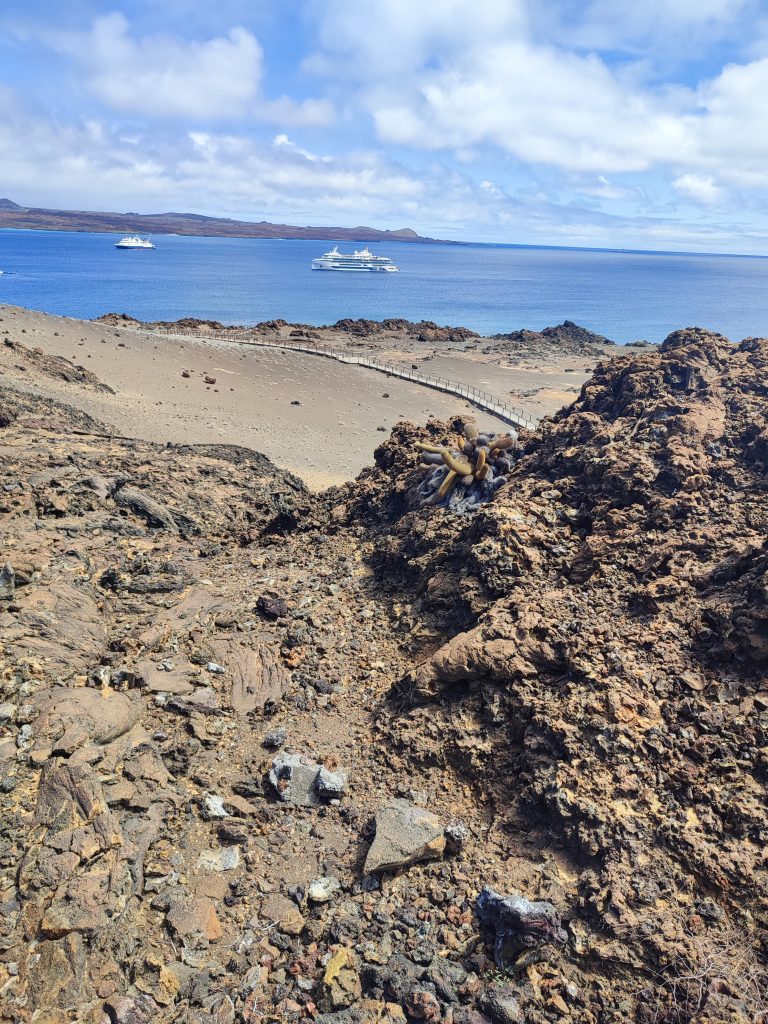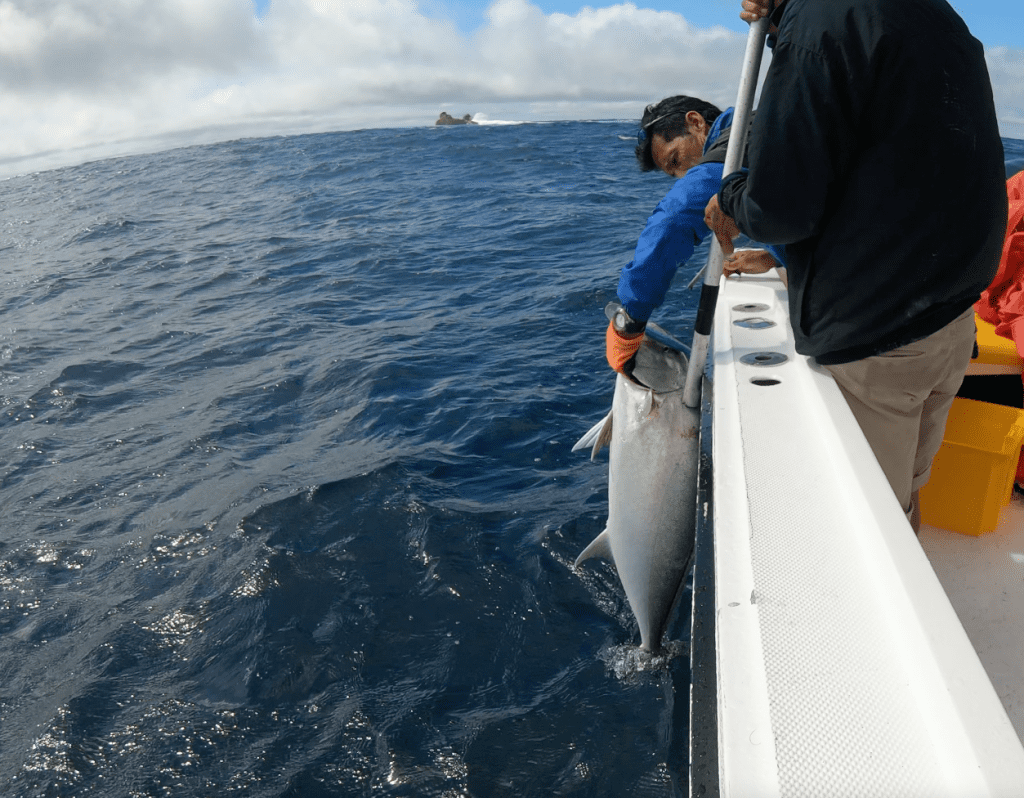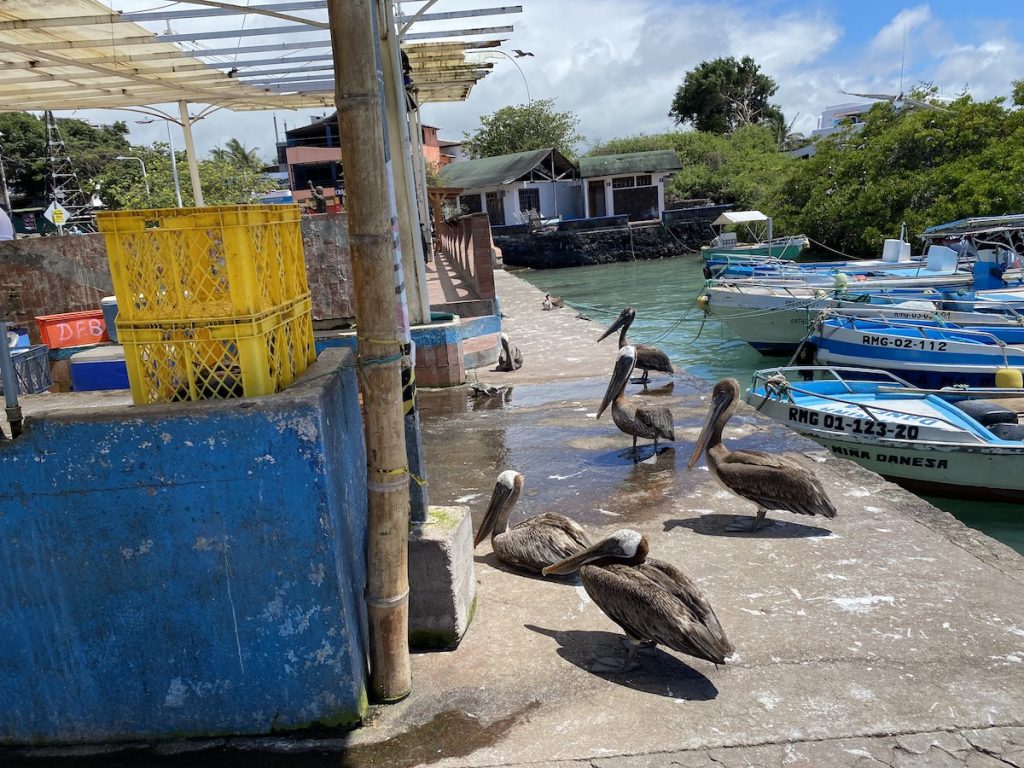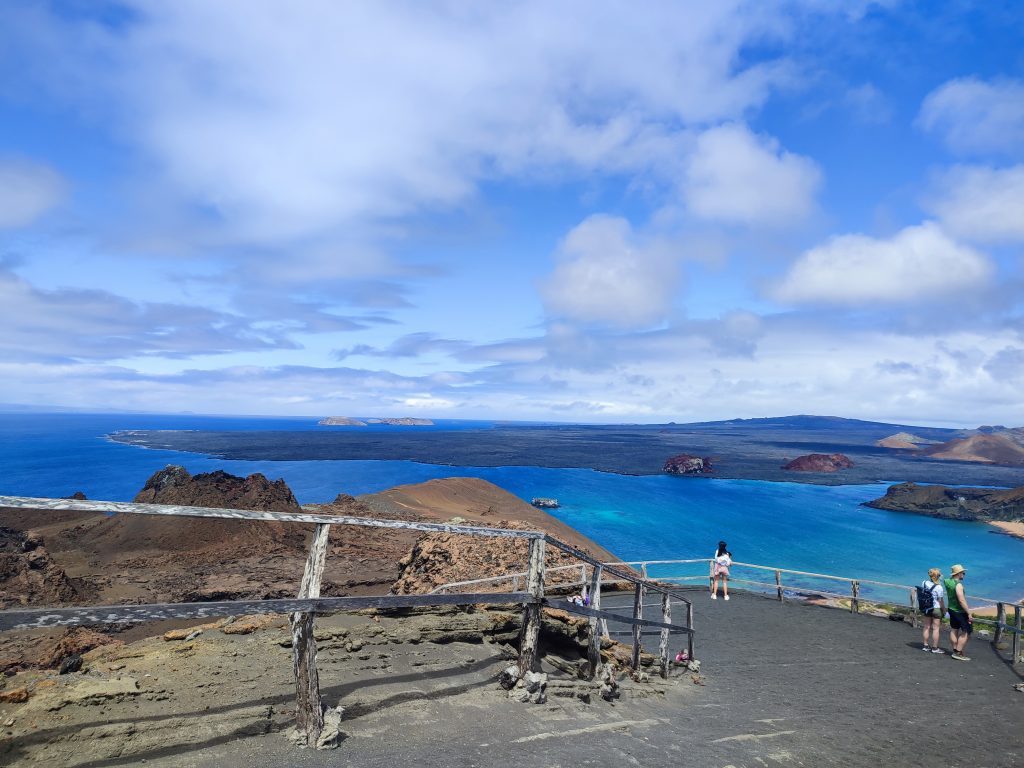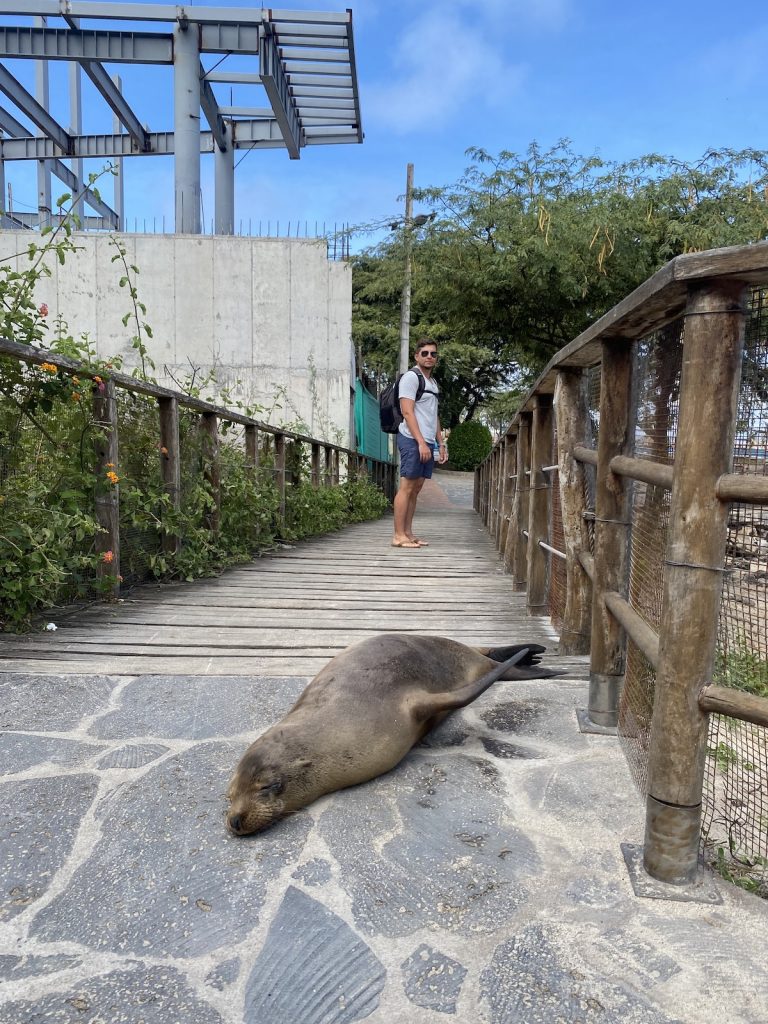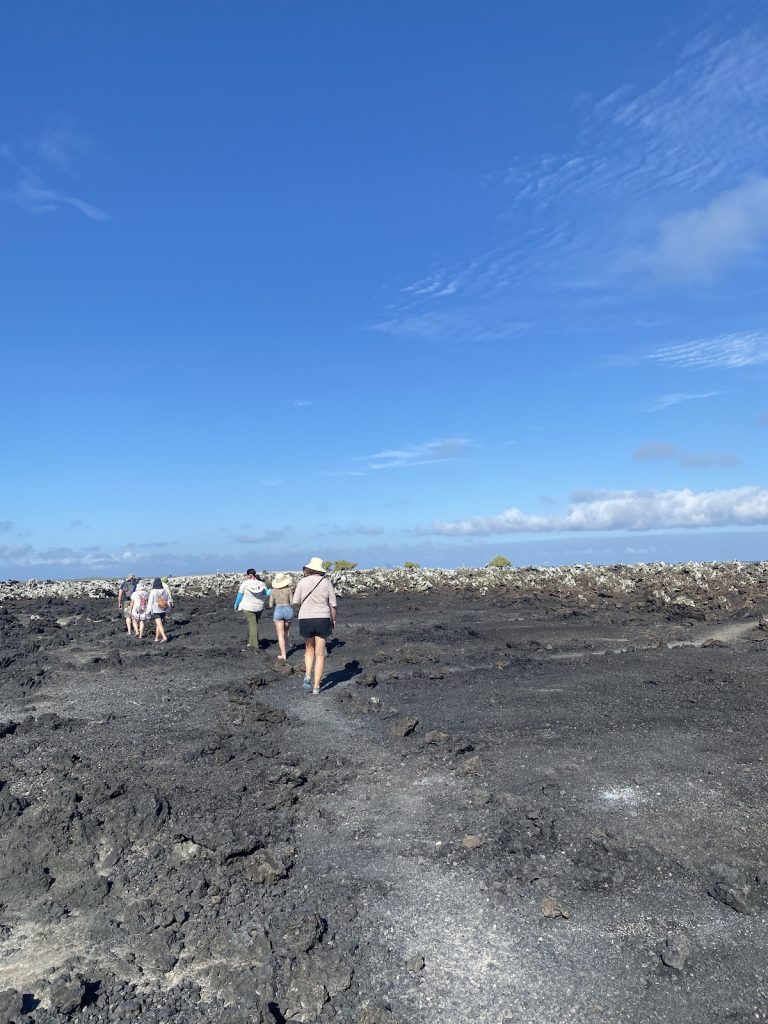The Galapagos Islands truly are a gem for travelers worldwide, and I could feel the excitement as we planned our visit, knowing that tourism here accounts for a striking 85% of the islands’ economy. Before the pandemic, the islands were bustling with visitors, which, while beneficial for the economy and locals, also posed risks to this fragile environment.
This is where ecotourism plays a crucial role. We saw firsthand how the Galapagos National Park actively promotes sustainable tourism, ensuring that future generations can experience the beauty and biodiversity that make these islands so unique.
In this post, I’ll share insights on how tourism affects the Galapagos, the essential benefits of ecotourism here, and ways we can all support Ecuador’s efforts to preserve these islands for years to come.
Planning a trip to the Galapagos? Make it truly impactful! Get a FREE personalized quote from a trusted local agency that prioritizes sustainable tourism. Enjoy an unforgettable adventure while supporting conservation efforts and local communities. Your support helps protect this one-of-a-kind destination for future generations!
Plan perfect trip to Ecuador & Galapagos
I spent countless hours researching everything about traveling to Ecuador, and I created this blog for fellow travel enthusiasts who want the best, most reliable information. But if you want to save time, we’ve partnered with the top local agency to plan your dream trip.
What is Ecotourism?
Ecotourism is about more than just seeing beautiful places; it’s about exploring in a way that respects and sustains these natural wonders. In the Galapagos, this approach means visiting untouched landscapes with a focus on sustainable development, conservation, and genuine respect for the local community.
Instead of just sightseeing, ecotourism encourages travelers like us to engage with the environment mindfully, leaving as little impact as possible while supporting the preservation efforts that protect these extraordinary places.
Negative Impacts of Tourism in the Galapagos
Tourism certainly brings essential benefits to the Galapagos, creating jobs and supporting local businesses. However, an overwhelming number of visitors can also strain the islands’ delicate ecosystems. For example, increased foot traffic has led to habitat disruption in sensitive areas, disturbing wildlife and vegetation.
Additionally, the rising demand for transportation, food, and accommodations contributes to more waste and pollution on the islands. It’s a reminder that even well-intentioned tourism has to be managed carefully to maintain the balance between supporting the community and protecting the environment.
Increased Demand For Food
With tourism booming in the Galapagos, meeting the food demand has become challenging for local farmers and fishermen. As more visitors arrive, restaurants and hotels often need to rely on imports from the mainland, which can strain resources and increase environmental impacts due to transportation.
While we didn’t personally encounter any food shortages and enjoyed the island’s dining options, knowing this helps us be more mindful of our choices. Opting for locally sourced dishes when available supports local farmers and minimizes the environmental footprint.
Littering
With the influx of tourists, littering has become an ongoing challenge in the Galapagos, posing risks to wildlife and threatening the pristine environment that attracts visitors. When trash isn’t disposed of properly, it can harm the delicate ecosystems, as animals might ingest harmful materials, mistaking them for food.
During our time on the islands, however, we noticed that the locals and most tourists are diligent about keeping the surroundings clean. It was heartening to see everyone respecting the natural beauty of the islands and following conservation guidelines.
Protecting the Galapagos Islands and its Wildlife
The pristine beauty and unique wildlife of the Galapagos demand a high level of environmental protection. The Ecuadorian government has made significant strides in preserving the islands’ delicate ecosystems. To help maintain the islands’ sanctity, the Galapagos National Park enforces a carrying capacity to limit the number of visitors.
One of our guides shared how these limits are carefully monitored and adjusted if any area shows signs of strain due to tourism. This approach helps prevent overcrowding at popular spots and safeguards the fragile ecosystems that are home to rare species.
One crucial measure aiding the islands is the $100 entrance fee required from all tourists visiting the Galapagos. While it might seem steep at first, this fee directly supports the island’s conservation efforts and local economy, ensuring the Galapagos remains protected.
Our guide explained that about $63 million from tourism goes toward the local economy and vital conservation work each year. So, by paying this fee, visitors actively contribute to preserving the natural beauty and unique biodiversity of these incredible islands, making our trip feel even more purposeful.
Benefits of Ecotourism in the Galapagos Islands
Economic Growth
Environmental Benefits
Ecotourism on the Galapagos Islands emphasizes environmentally friendly and sustainable development, ensuring that any new attractions don’t disrupt the islands’ delicate ecosystems. It’s comforting to know that even if new facilities are built, they are designed to protect the unique balance of Galapagos habitats.
Many tour operators we encountered actively support conservation efforts, either by collaborating on environmental projects or donating a portion of their profits to wildlife preservation. Eco-friendly tours also often include visits to sanctuaries and conservation projects where tourists can learn more about local efforts and even volunteer—creating a deeper connection and appreciation for these beautiful islands.
Educational Advantages
Tips to Maintain Sustainable Tourism in the Galapagos Islands
Comply with the Rules in the Conservation Areas and Parks
Respecting the basic rules and protocols in the Galapagos is such an easy way to contribute to preserving this incredible place. It’s a gesture of respect not just for the locals but also for the unique wildlife that calls these islands home.
Following guidelines like refraining from feeding the animals, limiting single-use plastics, and disposing of waste properly goes a long way. These simple steps might seem small, but they collectively make a significant impact. During our time on the islands, we found that these rules were easy to follow and reinforced the importance of respecting the natural beauty around us.
Support Local Businesses
Supporting local businesses by shopping for souvenirs, dining at local Galapagos restaurants, and enjoying drinks at local bars not only enriches your experience but also gives a real boost to the Galapagos economy. Every purchase directly benefits the islanders, allowing them to sustain their livelihoods without having to leave their home.
During our time there, we loved seeing the variety of handcrafted goods and trying out local dishes, knowing it was a way to contribute to the community. It’s a simple way for travelers to make a meaningful impact while taking home a piece of the Galapagos with them.
Ready to explore the breathtaking Galapagos Islands? Let us help you plan an eco-friendly itinerary that balances adventure with preservation. Get a FREE quote from expert locals and discover the best ways to experience these natural wonders responsibly. Together, we can keep the Galapagos thriving!
Choose Activities Responsibly
Being aware of local laws is essential when traveling to any location. Several rules in the Galapagos Islands can help you in making responsible decisions.
- Fishing from tour boars is prohibited.
- Motorized water sports are not permitted in the National Park.
- The National Park forbids aerial tourism.
If someone offers you any of these activities, confidently decline them. You can choose a low-impact activity instead, like kayaking.
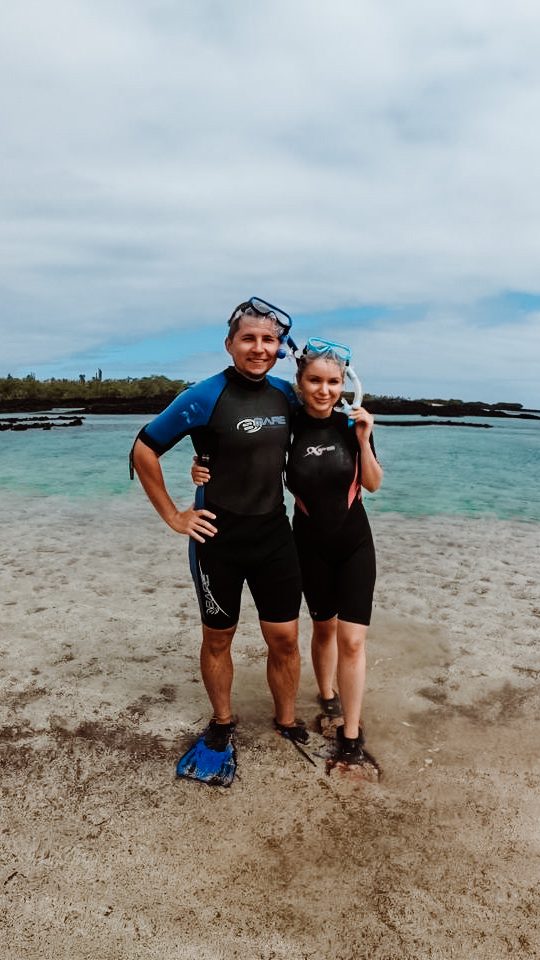
Planning trip to Galapagos Islands?
My wife and I spent two weeks on these magnificent islands, visited nearly every possible tour, and explored as much as we could. I shared all the important details in my comprehensive Galapagos Islands Travel Guide, where I cover everything you need to know about planning a trip to the Galapagos.
Galapagos Islands travel might surprise you with extra fees to enter the islands, the complicated logistics between islands, booking tours, and knowing which spots are free to explore and which ones are not. I’ve covered it all in this Galapagos Travel Guide.
Also, if you’re planning a trip to the Galapagos, make sure to use my link for discounted hotel prices via Booking.com. It really helps support my blog!
Conclusion
The Galapagos truly is a one-of-a-kind destination, with its awe-inspiring landscapes and unique wildlife that make it feel like stepping into a nature documentary. As travelers, we carry a responsibility to follow the islands’ guidelines and respect the delicate balance that makes the Galapagos so special.
Simple actions—like staying on designated paths, not feeding wildlife, and supporting conservation efforts—help protect these ecosystems, ensuring that future generations can also experience the same beauty we did. It’s all about mindful travel, respecting the natural wonder of the Galapagos while leaving as little impact as possible.
Plan perfect trip to Ecuador & Galapagos
I spent countless hours researching everything about traveling to Ecuador, and I created this blog for fellow travel enthusiasts who want the best, most reliable information. But if you want to save time, we’ve partnered with the top local agency to plan your dream trip.

